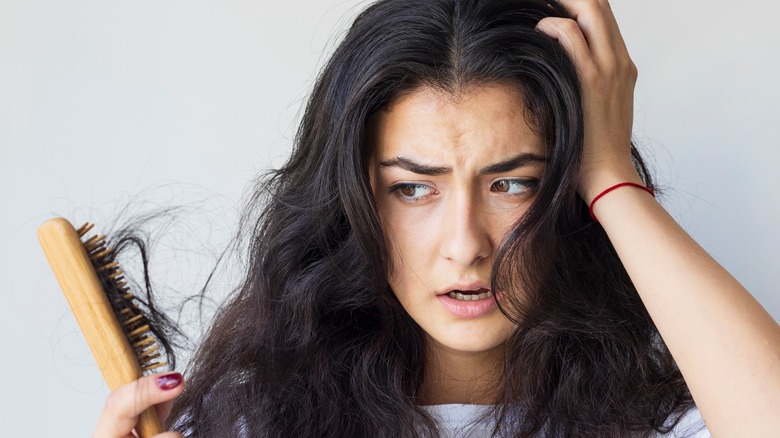Why You Should Think Twice Before Scratching Your Head
When the feeling of intense itchiness hits you, it can almost seem impossible to avoid scratching. The scalp is one of the most common places where itchiness occurs. According to Healthline, an itchy scalp, also known as scalp pruritus, can be caused by a variety of things, such as dandruff, contact dermatitis, psoriasis, and even diabetes. A 2019 study published in BioMed Research International noted that although research is limited on the condition, the prevalence of scalp pruritus ranges from 13-45%, according to previous studies.
Several treatments are available for getting rid of an itchy scalp. Topical steroids, antifungal creams, coal tar, and zinc are all solutions for an itchy scalp caused by dandruff. Avoiding irritating products can be the solution for itchiness caused by contact dermatitis (via Healthline). Although scratching your scalp may be the most immediate solution for temporary itch relief, surprisingly, it can lead to other problems.
Scratching your scalp can lead to hair loss and infections
When you repeatedly scratch a mosquito bite on your arm, skin irritation is more noticeable. However, your hair strands may be covering the fact that you're damaging your scalp. According to MedicalNewsToday, repeated and aggressive head-scratching can cause damage to the scalp and hair follicles. The scalp may bleed and scab, causing hair loss.
Scratching your itchy scalp can lead to scalp infections that can cause more itchiness and even pain. Fungus or bacteria can enter your scalp through damaged hair follicles or damaged skin created from scratching. You could develop tinea capitis, also known as ringworm, which can cause red, scaly, bald patches that can spread anywhere on the scalp. When bacteria enter your body through a damaged hair follicle, it is called folliculitis. This can cause painful, red rings to form around each infected hair follicle (via MedicalNewsToday).
Impetigo is a condition caused by staphylococcus that usually affects children and appears around the nose and mouth. However, staphylococcus bacteria can invade the body anywhere where the skin is broken. Impetigo can appear as red sores on the scalp that leave a yellowish-brown crust on the skin after they burst. It can also painful blisters that break open and leave itchy sores behind (via MedicalNewsToday). If you have an itchy scalp, it's best to get to the root of the problem to stop the itch.


